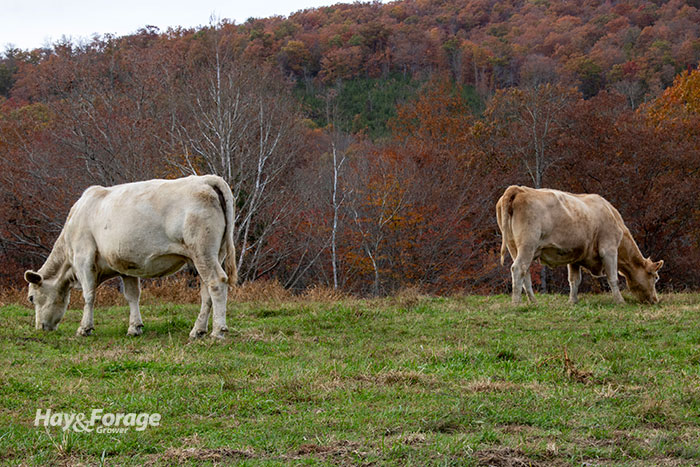Fall grazing dos and don’ts |
| By Amber Friedrichsen, Associate Editor |
|
|
 Although the first day of fall is fast approaching, many regions of the United States are still experiencing the aftermath from an exceptionally dry start to the summer. Even as milder temperatures bring cool-season forages out of their drought-induced dormancy, producers must continue to be mindful about grazing management. In a recent article from the University of Minnesota, Craig Shaeffer, extension forage specialist, and a team of extension educators remind producers to avoid overgrazing, reduce stocking rates, give pastures adequate rest, and control weeds this fall. Doing so will protect drought-stressed forage from further damage and maintain animal performance. Avoid overgrazing. Some species can tolerate more defoliation than others, but in general, plants must not be grazed lower than 4 inches. This is typically advised at any time of year, but it is especially critical following a dry growing season. The authors explain when cool-season forages go dormant during drought, plant leaves and stems stop growing but growing points and crowns remain active. Overgrazing removes these growing points and drains root reserves. “Perennial ryegrass, orchardgrass, and timothy store energy in stem bases and are especially susceptible to combined stress of overgrazing and drought, while alfalfa, smooth bromegrass, quackgrass, and reed canarygrass are more tolerant. Shallow rooted species like Kentucky bluegrass and red clover are also damaged by overgrazing,” the authors write. Reduce stocking rates. With less forage available, reducing the number of animals on pasture will stretch feed supplies. This can be achieved by culling cattle from the grazing herd and/or relocating livestock to a dry lot or sacrifice paddock and feeding them hay. Assess feed costs and cull prices to determine the most cost-effective solution. If producers choose to feed more hay, the authors suggest calculating how much forage will be needed through the winter. For example, one 1,200-pound cow that eats 2% of its bodyweight in hay will eat approximately 2.5 tons of forage from October through May. Test hay quality to ensure it meets animals’ needs and inspect forage for mold or weed contamination before making any purchases. Another consideration of feeding cattle hay is elevated water intake. “Livestock normally obtain some water from consuming moist pasture, and switching to dry hay will necessitate more water availability, especially if air temperatures are warm,” the authors note. Give pastures rest. Even if pastures start to green up after some precipitation, drought-stressed plants are likely not strong enough to withstand regular grazing. Giving livestock access to a pasture before it has sufficient time and moisture to make a full recovery can reduce stand persistence. “It takes 4 to 6 inches of water to produce a ton of cool-season grass or alfalfa. Smaller amounts of rainfall may stimulate regrowth, but grazing of tall-growing grasses should be delayed until there is 8 to 10 inches of regrowth,” the authors assert. “While grazing regrowth before plants reach these minimum heights may provide forage, it can weaken plants and reduce the long-term productivity of the pasture.” Control weeds. Some weed species can take advantage of drought conditions and proliferate when cool-season forage goes dormant. The authors warn that in addition to low nutritive value, some weeds like lambsquarters and pigweed can accumulate high levels of nitrates that are toxic to livestock. To successfully eliminate weeds, it is best to apply herbicide around a rainfall event. “This results in improved translocation of systemic herbicides and killing of crowns, lateral roots, and rhizomes,” the authors state. “Always read the herbicide label prior to use. Ensure the product is labeled for pastures and follow all grazing restrictions and recommendations related to environmental conditions at the time of use.” |
